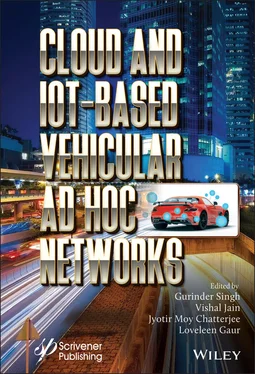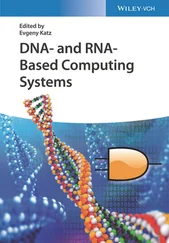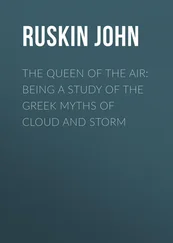1 Cover
2 Title Page
3 Copyright
4 Preface
5 Acknowledgment
6 1 IoT in 5th Generation Wireless Communication 1.1 Introduction 1.2 Internet of Things With Wireless Communication 1.3 Internet of Things in 5G Mobile Computing 1.4 Internet of Things and 5G Integration With Artificial Intelligence 1.5 A Genetic Algorithm for 5G Technologies With Internet of Things 1.6 Conclusion & Future Work References
7 2 Internet of Things-Based Service Discovery for the 5G-VANET Milieu 2.1 VANET 2.2 5G 2.3 Service Discovery 2.4 Service Discovery in 5G-VANET Milieu 2.5 Service Discovery Architecture for 5G-VANET Milieu 2.6 Performance Evaluation Metrics for Service 2.7 The Advantage of Service Discovery in the 5G-VANET Milieu 2.8 The Disadvantage of Service Discovery in the 5G-VANET Milieu 2.9 Future Enhancement and Research Directions 2.10 Conclusions References
8 3 IoT-Based Intelligent Transportation System for Safety 3.1 Introduction 3.2 Elements of ITS 3.3 Role of ITS in Safety 3.4 Sensor Technologies 3.5 Classification of Vehicle Communication Systems 3.6 IoT in Vehicles 3.7 Embedded Controllers 3.8 ITS Challenges and Opportunities References
9 4 Cloud and IoT-Based Vehicular Ad Hoc Networks (VANET) 4.1 Introduction to VANET 4.2 Vehicle-Vehicle Communication (V2V) 4.3 Vehicle–Infrastructure Communication (V2I) 4.4 Vehicle–Broadband Cloud Communication (V2B) 4.5 Characteristics of VANET 4.6 Prime Applications 4.7 State-of-the-Art Technologies 4.8 VANET Challenges 4.9 Video Streaming Broadcasting References
10 5 Interleavers-Centric Conflict Management Solution for 5G Vehicular and Cellular-IoT Communications 5.1 Introduction 5.2 Background 5.3 Device Identity Conflict Issue 5.4 Related Work 5.5 Interleavers-Centric Conflict Management (ICM) 5.6 Signaling Procedures for Enabling ICM 5.7 Conclusion References
11 6 Modeling of VANET for Future Generation Transportation System Through Edge/Fog/Cloud Computing Powered by 6G 6.1 Introduction 6.2 Related Works 6.3 Proposed System Overview 6.4 Modeling of Proposed System 6.5 Results and Discussion 6.6 Conclusion References
12 7 Integrating IoT and Cloud Computing for Wireless Sensor Network Applications 7.1 Introduction 7.2 Challenges and Opportunities 7.3 Case Study 7.4 Conclusion References
13 8 Comparative Study on Security and Privacy Issues in VANETs 8.1 Introduction 8.2 Characteristics of VANETs 8.3 Literature Survey 8.4 Authentication Requirements in VANETs Communications 8.5 Conclusion References
14 9 Software Defined Network Horizons and Embracing its Security Challenges: From Theory to Practice 9.1 Introduction 9.2 Background and Literature Survey 9.3 Objective and Scope of the Chapter 9.4 SDN Architecture Overviews 9.5 Open Flow 9.6 SDN Security Architecture 9.7 Techniques to Mitigate SDN Security Threats 9.8 Future Research Directions 9.9 Conclusions References
15 10 Bio-Inspired Routing in VANET 10.1 Introduction 10.2 Geography-Based Routing 10.3 Topology-Based Routing 10.4 Biological Computing 10.5 Elephant Herding Optimization Algorithm 10.6 Research Methodology 10.7 Conclusion References
16 11 Distributed Key Generation for Secure Communications Between Different Actors in Service Oriented Highly Dense VANET 11.1 Introduction 11.2 Hierarchical Clustering 11.3 Layer-Wise Key Generation 11.4 Implementation 11.5 Randomness Test 11.6 Brute Force Attack Analysis 11.7 Conclusion References
17 12 Challenges, Benefits and Issues: Future Emerging VANETs and Cloud Approaches 12.1 Introduction 12.2 VANET Background 12.3 VANET Communication Standards 12.4 VANET Applications 12.5 VANET Sensing Technologies 12.6 Trust in Ad Hoc Networks 12.7 Software-Defined Network (SDN) in VANET 12.8 Clustering Approaches: Issues 12.9 Up-and-Coming Technologies for Potential VANET 12.10 Challenges, Open Issues and Future Work of VANETs 12.11 Conclusion References
18 13 Role of Machine Learning for Ad Hoc Networks 13.1 Introduction 13.2 Literature Survey 13.3 Machine Learning Computing 13.4 Methodology 13.5 Simulation Results 13.6 Conclusions References
19 14 Smart Automotive System With CV2X-Based Ad Hoc Communication 14.1 Introduction 14.2 Realization of Smart Vehicle 14.3 Analysis of NXP Smart Vehicle Architecture 14.4 Smart Vehicle Proof of Concept (POC) 14.5 Smart Vehicle Trials 14.6 System Comparison 14.7 Summary and Conclusion Acknowledgement References
20 15 QoS Enhancement in MANET 15.1 Introduction 15.2 Priority Aware Mechanism (PAM) 15.3 Power Aware Mechanism 15.4 Hybrid Mechanism 15.5 Simulation Results and Discussion 15.6 Performance Comparison 15.7 Conclusion References
21 16 Simulating a Smart Car Routing Model (Implementing MFR Framework) in Smart Cities Introduction 16.2 Background 16.3 Literature Review 16.4 Methodology 16.5 Discussion and a Future Direction 16.6 Conclusions References
22 17 Potentials of Network-Based Unmanned Aerial Vehicles 17.1 Introduction 17.2 Applications of UAVs 17.3 Advantages of UAVs 17.4 UAV Communication System 17.5 Types of Communication 17.6 Wireless Sensor Network (WSN) System 17.7 The Swarm Approach 17.8 Market Potential of UAVs 17.9 Conclusion References
23 Index
24 About the Editors
25 End User License Agreement
1 Chapter 1Figure 1.1 Wireless communication IoT technologies [7].Figure 1.2 Force utilization in (dBm) for products low force Wi-Fi modules [5].Figure 1.3 Force utilization in (dBm) for products low force Wi-Fi modules [5].Figure 1.4 Illustrative case of Smart City assets that can profit by IoT when al...Figure 1.5 5G administrations that can be used for the IoT in smart cities [14].Figure 1.6 The pre-5G and the 5G IoT availability biological system [14].Figure 1.7 “Some specialized highlights of 5G administrations that can be used f...Figure 1.8 Elements of a 5G deployment [35].Figure 1.9 Carrier-neutral of “5G” deployment [35].Figure 1.10 Showing the architecture of the IoT with 5G [39].Figure 1.11 Illustration showing the AI and IoT relation to Form AIoT [20].Figure 1.12 The energy consumption ratio in cellular networks [10].Figure 1.13 Illustrative example ofthe proposed algorithm [41].Figure 1.14 The algorithm for the transmission [41].Figure 1.15 An illustrative example of the working of the transmission algorithm...
2 Chapter 2 Figure 2.1 VANET Milieu.Figure 2.2 A framework of service discovery.Figure 2.3 Service discovery Architecture for 5G-VANET milieu.
3 Chapter 3Figure 3.1 Elements of ITS.Figure 3.2 Implanted vehicle sensors in ITS [5]. Figure 3.3 ITS vehicular communications.Figure 3.4 Structure of three stage Internet of Things.Figure 3.5 Block diagram of ITS for human safety.Figure 3.6 Architecture of ITS for human safety.
4 Chapter 4Figure 4.1 Types of VANET architectures.Figure 4.2 Vehicle–Vehicle communication.Figure 4.3 Vehicle–Infrastructure communication.Figure 4.4 Vehicle–Broadband Cloud Communication.Figure 4.5 Long term evolution standardization timeline.Figure 4.6 Architectural view of video streaming over VANET in IOT domain.
5 Chapter 5Figure 5.1 Illustration of different modes of vehicular communication.Figure 5.2 Illustration of cellular IoT network architecture.Figure 5.3 Dedicated and shared CIoT networks with a common core network.Figure 5.4 Interleaver-based signaling between CIoT UE and CIoT or Cellular RAN.Figure 5.5 Extended signaling between CIoT UE, CIoT/Cellular RAN and CIoT servic...Figure 5.6 Interleaver-based signaling in V2I communication.Figure 5.7 gNB-initiated software upgrade signaling in V2I communication with op...
6 Chapter 6Figure 6.1 Frame work of the proposed system.Figure 6.2 Architecture of 6G-VANET Smart Transportation system.Figure 6.3 Proposed FMNMS1 Module.Figure 6.4 Proposed FMNMS2 Module.
7 Chapter 7Figure 7.1 IoT architecture.Figure 7.2 Cloud architecture.Figure 7.3 WSN architecture.Figure 7.4 IoT Cloud and WSN architecture.Figure 7.5 Health risk scale.Figure 7.6 System architecture.Figure 7.7 Sequence diagram.
Читать дальше












